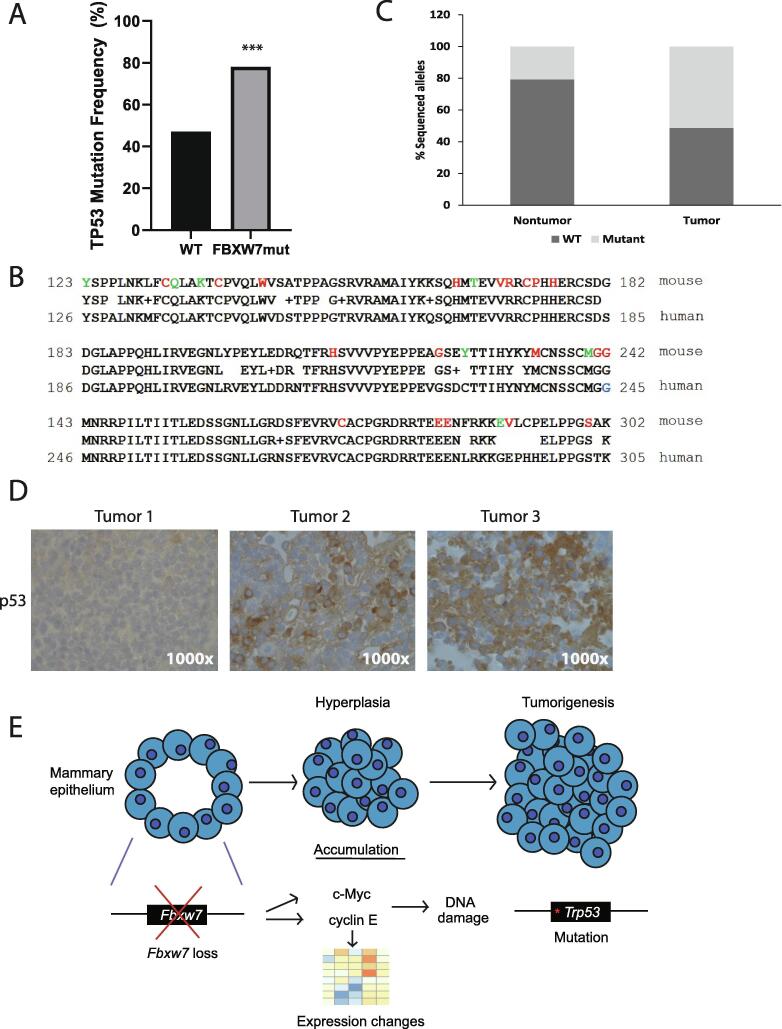Fig. 7.
Fbxw7 loss results in Trp53 mutation. A. cBioPortal was used to query datasets encompassing 8874 breast cancer patients across 15 studies for FBXW7 and TP53 mutational status. Patients that harbored a FBXW7 mutation had an increased frequency of TP53 mutations compared to FBXW7 WT patients. ***p < 0.001, one-sided Fisher’s exact test. B. Alignment of the mouse and human TP53 gene sequences, with all identified mutations in the nontumor samples highlighted in green and those in the tumor samples in red. The blue reside (G245) in the human sequence indicates a “hotspot” mutation in human breast cancer. C. Graph depicting percentage of sequenced alleles that were mutated vs. nontumor (left) and tumor (right) samples. D. IHC for p53 in three separate tumor samples, with tumors 2 and 3 showing elevated expression and partial nuclear exclusion of p53. All photos 1000×. E. Model for breast tumorigenesis triggered by Fbxw7 loss. Fbxw7 depletion results in upregulation of Notch-ICD, c-Myc, and cyclin E, which impact cell cycle, DNA damage response, and G2/M checkpoint genes. Enforced proliferation in the presence of DNA damage provides a selective pressure for the acquisition of Trp53 mutations, facilitating transformation.

